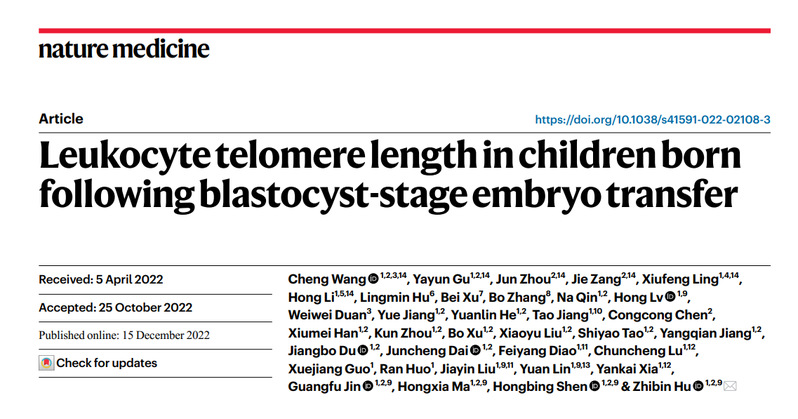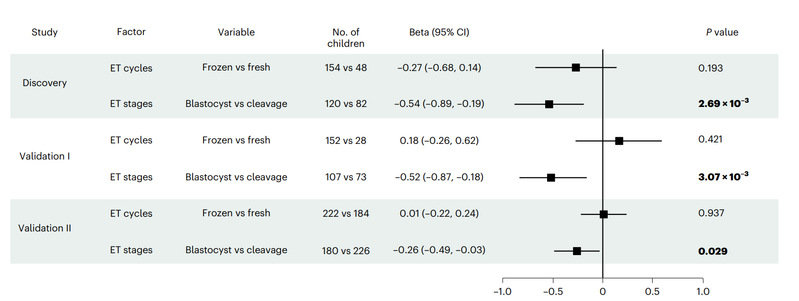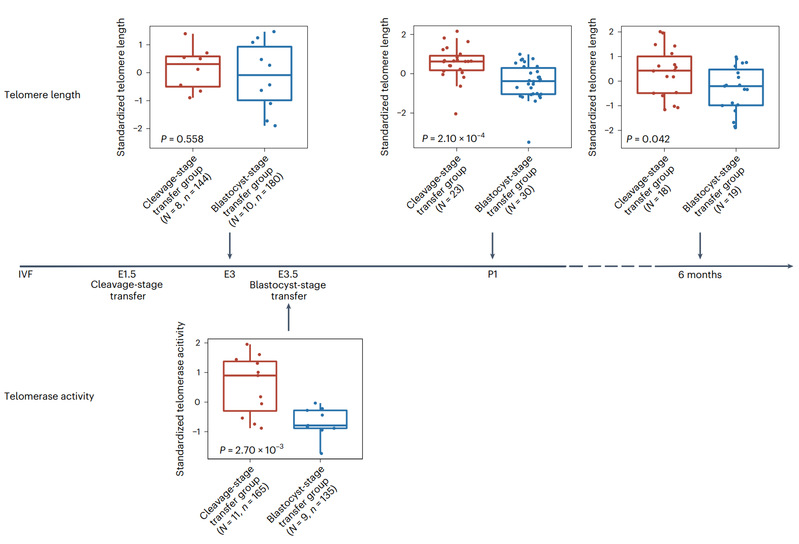Abstract
Perinatal and childhood adverse outcomes associated with assisted reproductive technology (ART) has been reported, but it remains unknown whether the initial leukocyte telomere length (LTL), which is an indicator of age-related phenotypes in later life, is affected.
Here, we estimated the LTLs of 1,137 individuals from 365 families, including 202 children conceived by ART and 205 children conceived spontaneously from two centers of the China National Birth Cohort, using whole-genome sequencing (WGS) data.
One-year-old children conceived by ART had shorter LTLs than those conceived spontaneously (beta, -0.36; P = 1.29 × 10-3) after adjusting for plurality, sex and other potential confounding factors. In particular, blastocyst-stage embryo transfer was associated with shorter LTL (beta, -0.54, P = 2.69 × 10-3) in children conceived by ART. The association was validated in 586 children conceived by ART from five centers using different LTL quantification methods (that is, WGS or qPCR). Blastocyst-stage embryo transfer resulted in shorter telomere lengths in mice at postnatal day 1 (P = 2.10 × 10-4) and mice at 6 months (P = 0.042). In vitro culturing of mice embryos did not result in shorter telomere lengths in the late cleavage stage, but it did suppress telomerase activity in the early blastocyst stage.
Our findings demonstrate the need to evaluate the long-term consequences of ART, particularly for aging-related phenotypes, in children conceived by ART.


Fig. 1 Forest plot of multivariable regression analysis involving embryo transfer (ET) cycles and ET stages in children conceived by ART.

Fig. 2 Analysis of telomere length and telomerase activity in mice conceived by ART with different embryo transfer stages.